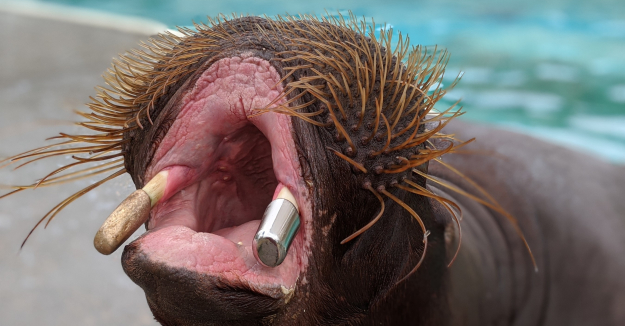
Quebec engineer, vets 3D print first crown to repair walrus tusk
By DE Staff
Additive Manufacturing MedicalWalrus dentistry effort a collaboration between the École de technologie supérieure (ÉTS), the Aquarium du Québec and Université de Montréal.

This 400 kg walrus received a 3D printed protective crown in less than five minutes and without the need for anesthesia. (Photo credit: École de technologie supérieure)
The protective dental device is the creation of Vladimir Brailovski, a mechanical engineering professor at the École de technologie supérieure (ÉTS) working in collaboration with Université de Montréal zoological medicine professor, Dr. Claire Grosset and Dr. Yvan Dumais, a veterinary dentistry clinician at Université de Montréal.
Since the metal with which crowns are manufactured varies from one institution to another, the team had to determine the metal best suited to 3D printing, a technique never before used to design crowns for these animals. The metal had to offer maximum resistance to repetitive rubbing and compression, and would not oxidize in salt water.
“We finally opted for cobalt chrome, a biocompatible alloy that is both hard and resistant to abrasion,” explains Professor Brailovski. To ensure a perfect fit, Brailovski and two engineering students manufactured three crowns, each different clearances. This approach offset any errors that might have accumulated throughout the process, from taking the tuskprint to modeling using a 3D laser scanner and to the installation of the crown.
Aside from manufacturing the crown, a solution had to be found for installing the crown onto the walrus tusk without the use of anesthesia, as the mortality rate under anesthesia is particularly high for this species. Thus, over a period of several months, the walrus underwent training three or four times a day to increase its ability to remain immobile. The strategy paid off; the walrus ultimately stayed still for the five minutes needed to install the appliance.
www.etsmtl.ca
https://chuv.umontreal.ca
